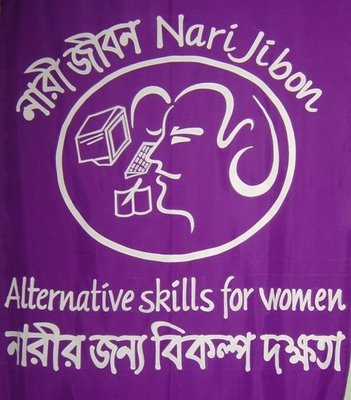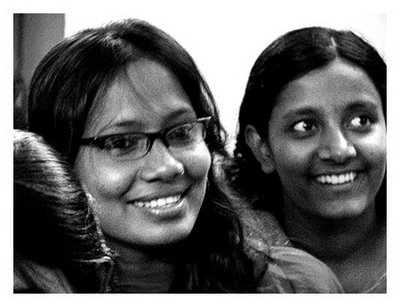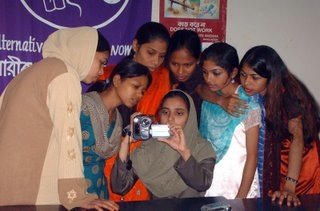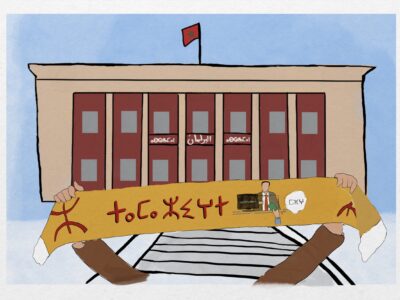 One of the many goals of Rising Voices is to help facilitate conversation between countries in the so-called ‘Global South’. Last month Laura Vidal, a Venezuelan journalist who publishes the column Blogpodium for the national daily Tal Cual, wrote about Rising Voices grantee Nari Jibon, which is based in Dhaka, Bangladesh. What follows is an English translation of her original piece.
One of the many goals of Rising Voices is to help facilitate conversation between countries in the so-called ‘Global South’. Last month Laura Vidal, a Venezuelan journalist who publishes the column Blogpodium for the national daily Tal Cual, wrote about Rising Voices grantee Nari Jibon, which is based in Dhaka, Bangladesh. What follows is an English translation of her original piece.
Among veils, songs, photos and immense needs, Bangladeshi women are challenging the stereotypical, sad image that Bangladesh has always had by talking about their everyday lives thanks to the Nari Jibon project, developed with a focus on education and to improving the situation of women. The main objective: to provide new tools for women in order to enhance their skills and protect them from the traditional threats, national and historic, that they constantly face.
The results of the training can be seen in their many blogs that provide a window into Bangladesh, its culture, its nature, its people and of course, its women. Access to computers is only the beginning of a long and fascinating journey, which, through the creation of blogs, online photography, web design, and podcasts, leads to a better ability to express oneself, improved study of writing and English, and certainly in the empowerment of the women who manage the technology and citizen media in Bangladesh, so far away on the map, yet as close to us as the speed of your internet connection allows.
Much of the content and the project is dedicated to eradicating discrimination against women, a difficult task in the countries of South Asia, and extol the values of supporting human rights and freedom of expression. And so, in Bangladesh another portrait is drawn with lines its bloggers. We can still expect many more blogs that show the lives of its people from the inside out.
To begin the Bangladeshi journey, you must start with narijibon.blogspot.com, watch their videos, and also visit the site of Venezuelan blogger Kira Kariakin at k-minos.com, who has put together a powerful collage of beautiful pictures. After listening to these girls it will be very difficult to not follow the links and see what they have to say. Although many of their posts (and the video) have been translated, they are in English. But thanks to their elegant simplicity, it will not be problem for Venezuelan readers (who, anyway, have long taken the language of others and made it their own). One of the most beautiful aspects that characterize the bloggers who belong to the movement is their affinity for publishing photographs, revealing much of what they see in Bangladesh and its culture.
It is likely that this list of bloggers is just the beginning of many samples of endearing prose and cultural expansion from a country that many of us consider a very poor extension of India. So, along with Nobel laureates, Yunnus, the banker of the poor, and Tagore, the great poet of Bengal (who incidentally created a university where women could attend) these women, empowered by technology, show that Bangladesh will emerge of its own rubble and fight for its own identity and a different image compared to that of traditional media. Said by the same poet: “for women, to give is to receive.”






4 comments
Fantastic news and a great piece capturing the spirit of Nari Jibon. Another step in further international exposure for the ladies at Nari Jibon, and well deserved at that!
Beautiful article by Laura… I didn’t read it until today.
I just found this post on my article. Thank you very much David, for your translation.